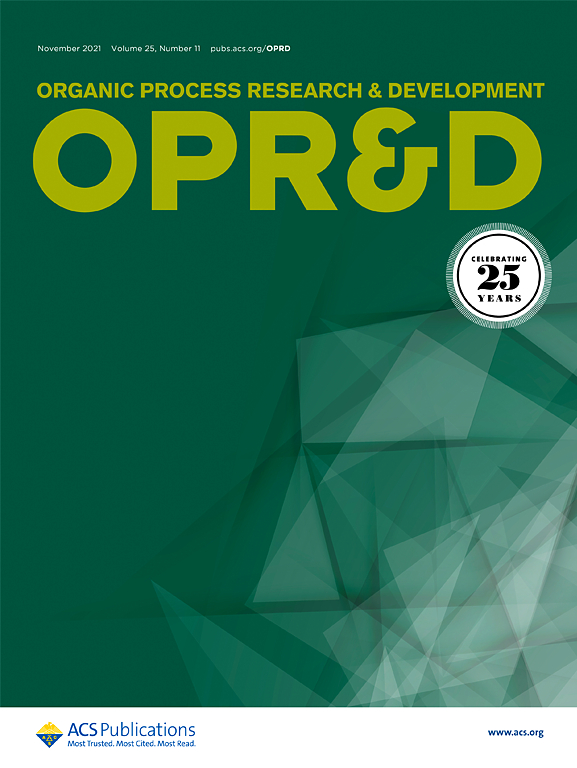四氢- 4h -吡喃-4- 1:从实验室规模到中试工厂生产
IF 3.5
3区 化学
Q2 CHEMISTRY, APPLIED
引用次数: 0
摘要
本研究描述了我们最近的努力,找到一个有效的和可扩展的途径,以四氢- 4h -吡喃-4- 1使用市售原料。描述了路线侦察工作和充分开发有效的接近目标。这项工作最终在我们的中试工厂设施中制备了超过20公斤的标题化合物。本文章由计算机程序翻译,如有差异,请以英文原文为准。

Tetrahydro-4H-pyran-4-one: From the Laboratory Scale to Pilot Plant Manufacture
This study describes our recent efforts to find an efficient and scalable route to tetrahydro-4H-pyran-4-one using the commercially available starting materials. The route scouting work and the full development of an efficient access to the target are described. This work culminated in the preparation of above 20 kg of the title compound in our pilot plant facility.
求助全文
通过发布文献求助,成功后即可免费获取论文全文。
去求助
来源期刊
CiteScore
6.90
自引率
14.70%
发文量
251
审稿时长
2 months
期刊介绍:
The journal Organic Process Research & Development serves as a communication tool between industrial chemists and chemists working in universities and research institutes. As such, it reports original work from the broad field of industrial process chemistry but also presents academic results that are relevant, or potentially relevant, to industrial applications. Process chemistry is the science that enables the safe, environmentally benign and ultimately economical manufacturing of organic compounds that are required in larger amounts to help address the needs of society. Consequently, the Journal encompasses every aspect of organic chemistry, including all aspects of catalysis, synthetic methodology development and synthetic strategy exploration, but also includes aspects from analytical and solid-state chemistry and chemical engineering, such as work-up tools,process safety, or flow-chemistry. The goal of development and optimization of chemical reactions and processes is their transfer to a larger scale; original work describing such studies and the actual implementation on scale is highly relevant to the journal. However, studies on new developments from either industry, research institutes or academia that have not yet been demonstrated on scale, but where an industrial utility can be expected and where the study has addressed important prerequisites for a scale-up and has given confidence into the reliability and practicality of the chemistry, also serve the mission of OPR&D as a communication tool between the different contributors to the field.

 求助内容:
求助内容: 应助结果提醒方式:
应助结果提醒方式:


